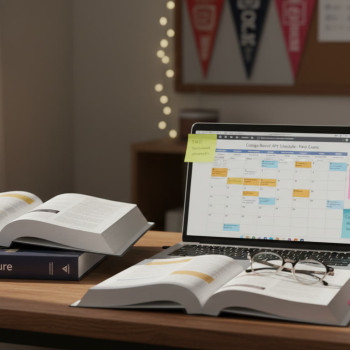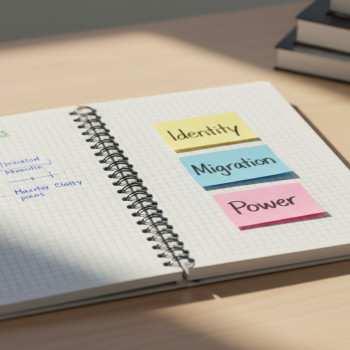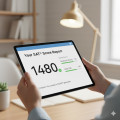Why This Year Matters: A Friendly Reality Check
Junior year is the heart of the AP experience for many students. It’s the year when choices start to compound: the AP courses you pick, the study rhythms you build, and the relationships you form with teachers can shape your academic momentum and your college options. That can feel heavy — and it is — but it also means you have a huge opportunity to get intentional, strategic, and calm.
This roadmap is designed for real students: busy schedules, extracurriculars, part-time jobs, and the need to keep your sanity. Think of it like a season plan for peak performance. You’ll get month-by-month checkpoints, study tactics that actually work, sample schedules, and practical advice for test day and score decisions. I’ll also point out where one-on-one help — like Sparkl’s personalized tutoring with tailored study plans and expert tutors — fits naturally, if you want to accelerate or personalize your prep.
Big Picture: What to Expect in an AP Year
AP years tend to follow a predictable arc. Knowing the arc helps you place effort where it matters most.
- Fall (August–November): Course selection, register for exams (school deadlines), build foundational knowledge, and set up weekly study rhythms.
- Winter (December–February): Deepening content work, practice with timing, first round of practice tests or AP Classroom work, adjust strategies.
- Spring (March–May): Focused exam practice, final skill polishing, digital portfolio/submit tasks for art/CS/Capstone where relevant, and mental preparation.
- Exam Season (May): Two-week exam window, check-in with your coordinator for times and rules, and final logistics.
- Post-Exam (June–July): Review choices about score sends, score cancellations or withholding, and consider summer enrichment.
Key Administrative Dates Every Junior Should Know
Most schools follow the College Board calendar: AP exams are administered during a two-week window in May. There are also ordering deadlines you should be aware of — many schools ask for student choices by a November school deadline so they can order exams. If you’re in a spring-only course, there is usually a later ordering window in March. Talk to your AP coordinator early — it’s an easy step that prevents last-minute scrambling.

Choose Your Courses Like a Strategic Athlete
Picking AP classes is the first tactical move. There’s no universal rule, but here are smart principles to guide you.
- Play to strengths, then stretch wisely: Take at least one AP in a subject where you have a strong foundation (math, science, English, history, languages). Add one stretch AP if you want a challenge, but don’t overload more than two or three full-year APs unless you know your tolerance for heavy coursework.
- Balance breadth and depth: Admissions like rigorous, well-rounded transcripts. Pair a STEM AP with a humanities AP if your interests span fields — it shows academic curiosity.
- Consider college credit and placement: If you know you want to major in a field, prioritize APs that reduce intro college requirements (Calculus, Biology, Chemistry, English).
- Think about teacher fit: A supportive and experienced AP teacher significantly affects your year. If possible, talk to seniors who’ve taken the class.
Sample Course Loads and Why They Work
Here are three common junior-year setups and the logic behind them:
- Balanced Rigour (Popular): AP English Language + AP US History + AP Biology or AP Calculus AB. Mix of reading/writing, problem solving, and lab skill.
- STEM Focus (Targeted): AP Calculus BC + AP Physics C + AP Computer Science A. Heavy on math and lab; great for intended STEM majors.
- Humanities Focus (Depth): AP English Literature + AP European History + AP Psychology. Big on reading, writing, and conceptual thinking.
Month-By-Month Roadmap: From Day One to Exam Day
Below is a practical month-by-month plan tailored for a student taking two to three AP classes. Adjust times if you have more or fewer courses.
August–September: Set Up Systems
- Create a master calendar (paper + digital) listing class schedules, project deadlines, test dates, and AP deadlines.
- Establish weekly study blocks: 30–45 minutes per AP on school nights; 2–3 hours on weekends for practice or reading.
- Start a content notebook (one per AP) with clear organization: definitions, formulas, timelines, and sample responses. Use color codes.
- Take baseline diagnostic quizzes or College Board practice questions to identify weak areas.
October–November: Build Foundational Skills
This is the time to reinforce core content and build habits. If your school requires exam registration in My AP, confirm with your AP coordinator and meet the school’s ordering deadline.
- Weekly strategy sessions: one session per week to review practice problems under timed conditions.
- Join or form a study group for weekly topic review — teaching a concept to peers is one of the fastest ways to master it.
- Begin practicing free-response writing (FRQs) for APs like History, English, and Science — focus first on structure and clarity not speed.
December–January: Simulate and Adjust
Use the winter break to take your first full, timed practice exam for each AP. Then make a targeted study plan based on results.
- Analyze the practice exam: identify 2–3 skill areas that cost you the most points and focus drills there.
- If you find recurring gaps — like timed essays or experiment design — set up mini-lessons. Personalized tutoring can make these more efficient; Sparkl’s one-on-one guidance and AI-driven insights are especially useful for pinpointing exactly where to focus.
- Switch study techniques if something isn’t working. For example, active recall and spaced repetition outperform rereading 9 times out of 10.
February–March: Ramp Up with Purpose
This is the time to increase test-like practice and make sure performance is consistent.
- Take a timed practice exam every 3–4 weeks per AP. Track score trends, not single scores.
- Incorporate mixed practice sessions: practice problems that force you to choose strategies quickly (this mimics exam decision-making).
- Finalize any digital portfolio submissions for AP Seminar, Research, Art, or Computer Science Principles — know each deadline and required file format.
April: Intensive Polishing
April is your final technical polishing month. Focus on test mechanics: timing, evidence selection, and free-response structure.
- Weekly full-length practice exams for your primary APs (especially those with multiple sections).
- Target weak subskills with 20–30 minute micro-sessions daily (e.g., analyzing a DBQ paragraph, decomposition of a physics problem).
- Start tapering other commitments if possible—reduce new projects so mental energy is available for consolidation.
May: Exam Season (Logistics and Mindset)
Exams take place across two weeks in May. Make sure you know when your exams are scheduled and where to report. Sleep becomes a strategy—prioritize consistent rest and nutrition.
- At least two nights before an exam, avoid heavy new studying; instead, do a light review and sleep early.
- On exam day, arrive early, have snacks for between exams, and bring only permitted materials. Practice breathing techniques to manage anxiety before you begin.
- Trust the preparation you’ve done; exam weeks reward calm, clear thinking as much as knowledge.
Daily and Weekly Routines That Actually Work
Habits beat motivation. Here are simple routines that create steady progress without burning you out.
- Daily 25–45 Minute Sessions: Short, focused sessions using retrieval practice and a single objective (e.g., “master these 10 AP Bio vocabulary terms”).
- Weekly Mixed Practice Block: 2 hours on weekends for full-section practice under timed conditions.
- One Master Review Sheet: At the end of each week, create a one-page summary of the most important ideas you practiced — this becomes your pre-exam cheat-sheet (for review only, not allowed in tests).
- Monthly Checkpoint: Take a practice exam and compare it to the previous month. Adjust study plan; celebrate small wins.
How to Use Active Study Techniques
Replace passive highlighting with active strategies:
- Flashcards with spaced repetition (digital apps or index cards).
- Self-quizzing: close your notes and write what you remember; then check and correct.
- Explain-it-to-a-friend: record yourself teaching a topic for two minutes; you’ll hear gaps instantly.
- Timed FRQ practice with model rubric checks — not once, but several times to build speed and structure.
Smart Practice: Quality Over Quantity
Two hours of focused, deliberate practice beats five hours of unfocused review. Deliberate practice has three elements: clear goals, immediate feedback, and repetition until mastery. Use practice exams as diagnostic tools, then drill the underlying skill, not just the problem type.
| Practice Type | Best For | How to Do It |
|---|---|---|
| Timed Multiple Choice Sections | Speed & Decision-Making | Simulate the exam environment; review missed questions by error type. |
| Free-Response Practice | Clarity, Evidence, Organization | Write full responses under timed conditions and use rubrics to self-score. |
| Micro-Drills (20–30 min) | Specific Skills (e.g., calculus integrals) | Isolate one skill and do 10–15 problems focusing on method consistency. |
| Mixed Practice Sets | Exam Decision-Making | Do mixed questions from different units to practice choosing methods quickly. |
Mental Health, Burnout Prevention, and the Social Side
Academic success is not sustainable without balance. Juniors often forget that mental stamina is the product of habits, not heroic all-nighters.
- Schedule deliberate downtime. A regular break—30 minutes of physical activity or social time—improves learning efficiency.
- Be honest about limits. If three APs plus leadership roles feel like too much, consider shifting one to senior year.
- Sleep is non-negotiable. Memory consolidation happens in deep sleep; deprioritizing sleep will cost more time in the long run.
- Talk to your school counselor if stress is overwhelming. Schools have resources, and accommodation conversations happen earlier than you think.
Use Community to Make It Fun
Study groups, peer teaching, and shared practice tests build accountability. Keep groups small (3–4 people) and task-focused so sessions stay productive.

When and How to Use a Tutor (and What Good Tutoring Looks Like)
Tutors are not just for remediating weak areas; they can accelerate learning, provide structure, and offer exam-specific strategies. Here’s when tutoring is high-leverage:
- You have a specific skills gap that practice alone isn’t fixing (e.g., FRQ thesis construction, lab design).
- You need a disciplined, personalized study plan to fit into a busy schedule.
- You want targeted score improvement in a single AP or a test-taking strategy overhaul.
Good tutoring is tailored, frequent enough to maintain momentum, and focused on measurable outcomes. If you’re curious, consider short-term tutoring blocks before and during the spring — for example, three months of weekly 1-on-1 sessions to close the most damaging weaknesses. Sparkl’s personalized tutoring offers expert tutors, tailored study plans, and AI-driven insights that can help you prioritize weak areas and track progress. That sort of targeted support can make your practice exponentially more efficient.
Test Day: Practical Checklist and Mindset
The day-of routine is half logistics and half mindset. Here’s a practical checklist to reduce friction and optimize performance.
- Confirm report time and exam room the week before.
- Pack the night before: school ID, approved calculator (with fresh batteries), pencils, erasers, watch (if allowed), water, and non-noisy snack for between exams.
- Use a brief pre-exam warm-up: 5 minutes of deep breathing and a 10-minute light review of your most reliable summary sheet.
- During the exam, scan the whole section if time allows. Tackle high-confidence questions first to build momentum.
Handling Multiple APs Close Together
If you have two exams within a short window, treat recovery like an event. Sleep, hydration, light protein-rich meals, and a short walk between exams make a real difference. Your brain is a muscle — feed and rest it.
After the Exams: Decisions About Scores and Next Steps
AP scores are released in July. Schools and students use them differently — some for college credit, some for placement. Here’s how to think about score decisions:
- Review scores in context: Compare to your target colleges’ policies (which you’ll need to look up). A 3 might earn placement at one school and credit at another.
- Free score send: Each year you take an AP exam you can send one free score report to a college in a limited window after scores release. Decide early which institution or program should receive it.
- Score cancellation or withholding: If you think your score was affected by illness or other major issues, investigate the College Board policies and talk to your counselor; there are deadlines for these requests.
Real-World Examples: How Juniors Turned Plans Into Results
Example A: Maya, AP Biology + AP Literature — Maya used weekly micro-drills for lab methods and timed essays for literature. She replaced passive reading with 20-minute active recall sessions and worked with a tutor for three months before May to tighten her FRQ structure. The result: a steadier improvement curve and much less panic in April.
Example B: Alex, AP Calculus AB + AP Physics 1 — Alex split nights between formula review and problem sets and used mixed practice sets on Saturdays. He tracked error types (algebra mistakes vs. conceptual mistakes), then focused on the conceptual ones that cost most points. Small efficiency gains multiplied into higher scores.
Tools and Resources to Make the Year Smoother
Use digital calendars, a flashcard app with spaced repetition, and College Board practice resources (course-specific FRQs and sample exams). But don’t let tools become distractions — the best tools are the ones you will actually use consistently. If you want help shaping the study plan or need weekly accountability, targeted 1-on-1 guidance from an experienced tutor is a force multiplier; Sparkl’s personalized tutoring pairs expert tutors with tailored study plans and AI-driven insights to help you focus on what moves the needle.
Final Pep Talk: Keep the Long View
Your junior year will be intense, but it’s a season, not a life sentence. The discipline and study habits you build this year will serve you beyond AP exams — in college courses, internships, and the way you approach challenges. Focus on steady progress, not instant perfection. Celebrate small wins: clarity on a tough concept, a practice score that improved by a few points, or the night you chose rest over extra hours and still performed fine the next day.
AP success is the sum of consistent systems, smart practice, and self-compassion. Make the plan, follow the process, and ask for help when you need it. If structured, personalized help would shorten your learning curve, consider a few months of targeted tutoring — the right support can transform stress into confidence.
Quick Checklist to Start Today
- Create your master calendar and mark exam dates and school ordering deadlines.
- Set 3 weekly study blocks per AP: two micro-sessions and one extended weekend session.
- Take a baseline practice test for each AP to identify the top two weak skills.
- Decide whether you want short-term tutoring for targeted skills and book a trial session if so.
- Plan three self-care commitments per week: sleep schedule, 30 minutes of movement, and one social check-in.
There you have it — a roadmap that respects busy lives and ambitious goals. If you take one thing away: start small, study smart, and keep reviewing. The mountain of AP prep looks much smaller when you break it into steady steps. Good luck — you’ve got this.


















No Comments
Leave a comment Cancel